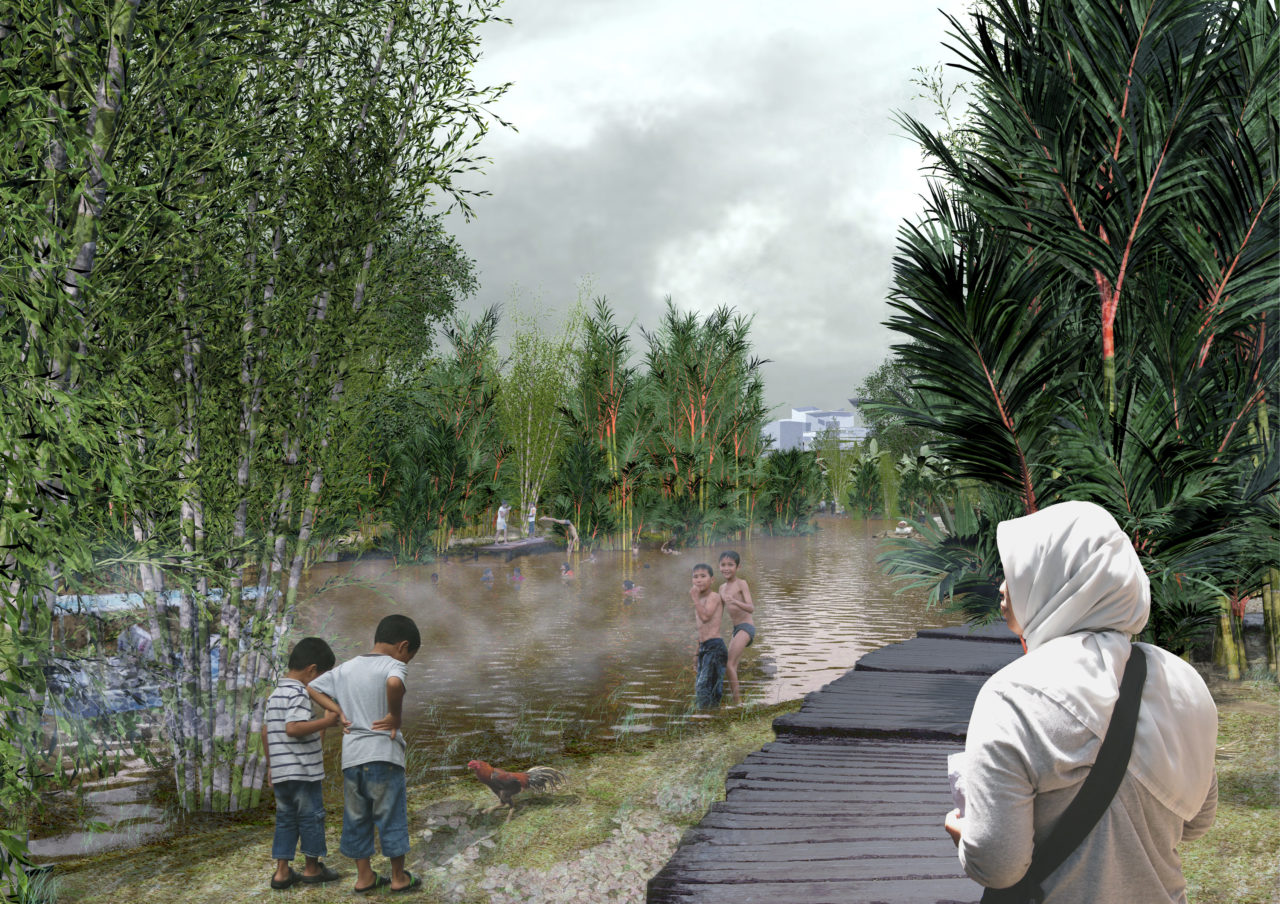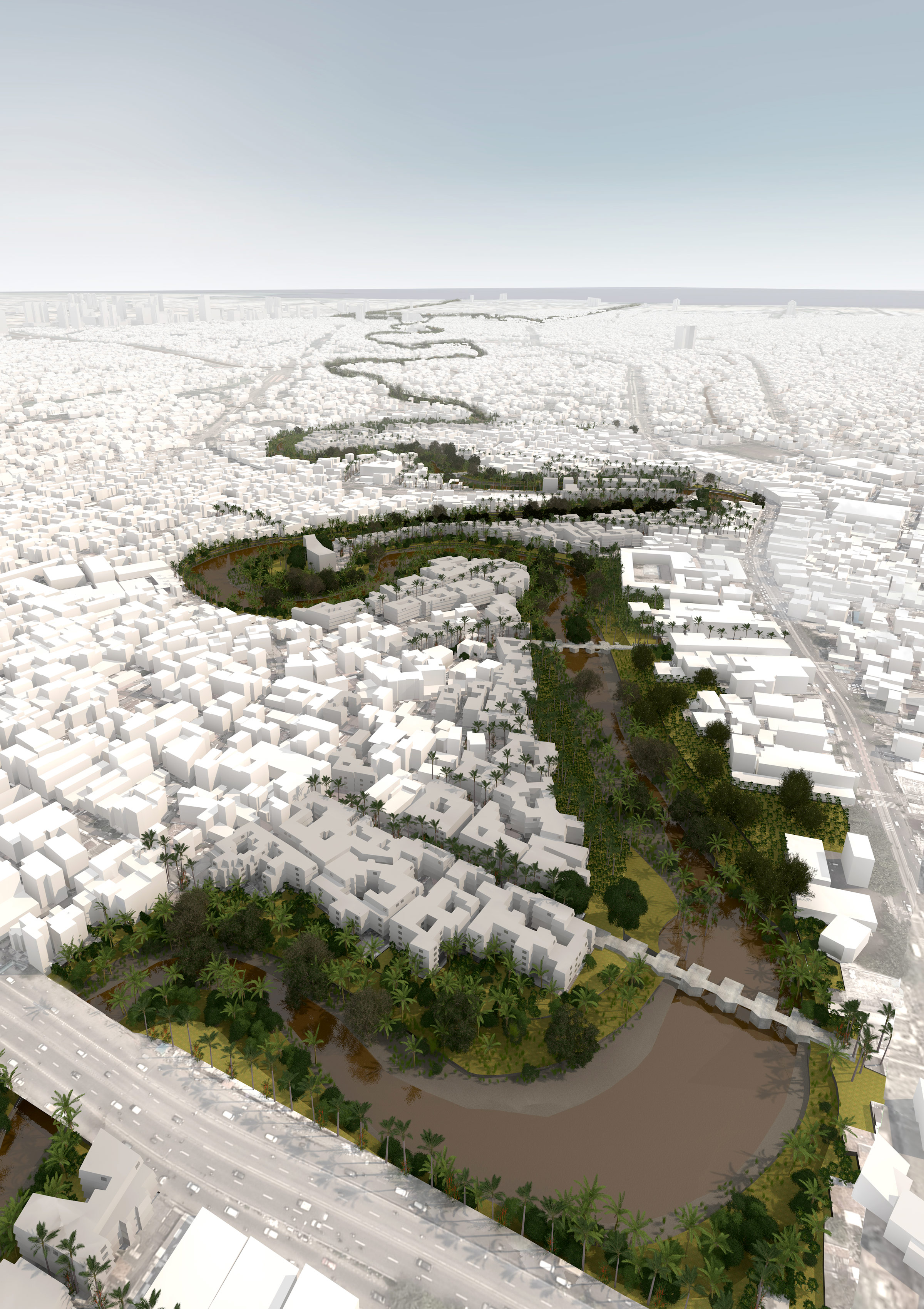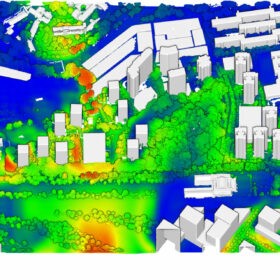
The Design Research Studio on the Ciliwung River is part of the ETH Future Cities Laboratory in Singapore involving architecture students for two semesters on one of the most challenging sites in Jakarta: the Kampung Melayu. The designs formulate solutions to the physical and spatial condition of degraded riparian landscapes in conjunction with the ongoing and rapid urbanization.
The operational framework and methodology of the design studio involved landscape, architecture and urban design following the precepts of a site-specific topological approach. Emphasis has been on the role of landscape and dwelling structures as they interact with the adjacent river in the flood prone neighbourhoods of Kampung Melayu and Bukit Duri in Jakarta. Characterised by densely populated low-rise dwellings with limited public space, low coverage of municipal water and waste handling services, these informal settlements are highly vulnerable to flooding. In January 2013, areas of the site were inundated to four meters, with flood-water not only causing damage to property and infrastructure, but also risks to human life and health. Taking on multiple flood conditions from low to extreme and on a variety of scales – the unit, the block, the kampung (urban village) and all the way to the entire river catchment – the students formulated hypotheses for the transformation of the Indonesian kampung and river. The developed prototypes suggest that the widening of the river corridor could also become an incentive to double the population density in the remainder of the kampung.
The underlying thesis is that landscape and architecture have to be developed together to bring forth solutions restoring the quality and purpose of the river within its degraded context while providing higher living densities. This has been demonstrated by the interdisciplinary research project at the Chair of Landscape Architecture by Ch. Girot and the Chair of the planning of Landscape and Urban Systems by A. Grêt-Regamey at the ETH research centre in Singapore. The goal is to set clear topological rules to define generative principles for both landscape and architecture as a way of restructuring urban river profiles in response to flooding, overcrowding and insalubrious conditions. Results of the Spring Semester 2013 Design Studio were revised in an Elective Thesis investigating the detailed design of an urban park with topographical shaping and planting plans. The shaping of the river was examined with flood simulations computed on point cloud models describing the water propagation by its amount and speed. All designs visualize a plausible approach of urban spaces presenting a tangible vision for the future of the Ciliwung river in Jakarta.
Contact: Philipp RW Urech
The results of the design studio semester and elective course will be exhibited at the IABR International Architecture Biennale Rotterdam, open from May 29th to August 24th 2014.
Teaching team: Prof. Christophe Girot, Ilmar Hurkxkens, James Melsom, Magdalena Osinska, Philipp RW Urech
The research has evolved from an interdisciplinary collaboration between several departments of architecture, landscape architecture and engineering of the National University of Singapore, University of Indonesia (Depok), Bogor Agricultural University, and ETH Zurich.

